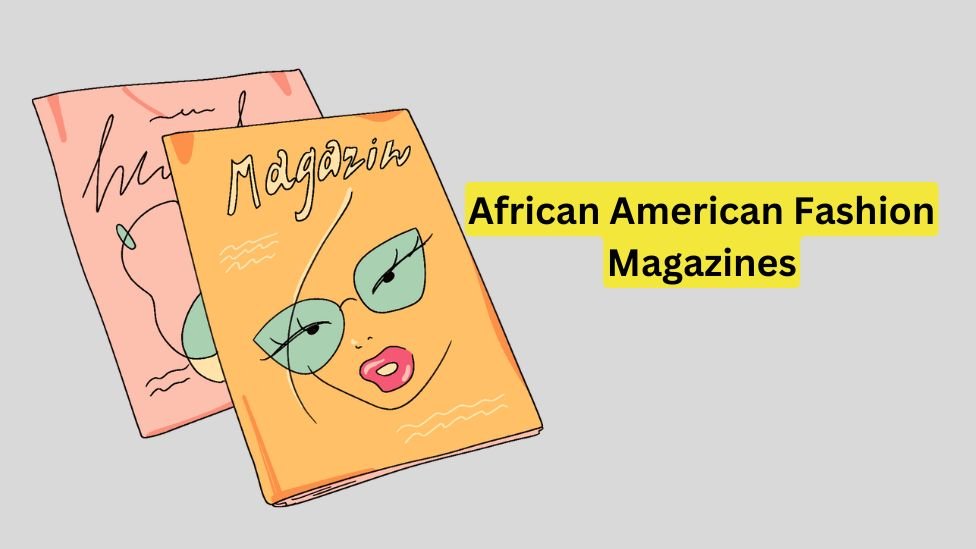Fashion has always been a way people could express themselves and for black individuals it was a way to show style but it also became a way to demonstrate historical and cultural heritage. An important support of this expression comes from African American fashion magazines which in turn bring out new designers, promote talents, and embrace the beauty within the community.
This paper aims at discussing the role of black fashion magazines, contribution to the field of fashion and some of the most important magazines that influenced, and still influence, the representation of black people in fashion.
The Role of African American Fashion Magazines
Fashion magazines formed and run by African American give a voice to a community that is often overlooked in mainstream fashion media outlets. Traditionally fashion magazines aimed at the general population have been labelled asracist and sexist. Still, African American fashion magazines have always tried to fill that void by providing a few Black beauty, style, and culture on their own ground.
These publications provide distinct insights, and although generally they tend to present the new wave, elements of popular culture characteristic to the African American population are incorporated. It not only catwalk A-list luxury wear but also piecing together elements of Black culture, urban wear, and ethnicity alongside conventional indigenous African clothing that is being designed and manufactured in equal parts by black designers. Moreover, they discuss things which are essential for African American women such as self-acceptance, body image, or race and ethnicity in the media.
Fashion magazines among African Americans defuse the divide between fashion as well as activism. They have been laudable in promoting Black designers, models and photographers and therefore they define who is accepted to be in the fashion world. Further, a significant percentage of African American fashion magazines celebrate black talent who are challenging the system, and offer hope to the youth who want to venture into the fashion world.
Key African American Fashion Magazines
- Ebony Magazine
Another black publication that has seen its years in the community is the Ebony magazine which was started in 1945 by John H. Johnson. As comprehensive Ebony magazine is, one can boldly name the qualitative impact of its fashion departament on the Black imagery. The fashion magazine learned how to adhere to young people’s concerns and desires by using first young photo shoots including Black models as well as celebrities as its start point for the distortion of ‘High Fashion’. Since the 1970s, Ebony has continued to be a voice, showcasing the current styles, make-up, and the rising black apparel designers.
- Essence Magazine
Essence magazine was started in 1970 by Clarence O. Smith and Edward Lewis it grew in popularity as a magazine that would empower black women to embrace beauty and fashion as well as success. It would be more familiar to readers as it is especially dedicated to fashion, beauty, and lifestyle intended for Black women of the world. Despite the seemingly glamorous glossy magazine, Essence frequently incorporates distinctly African American women’s issues and Hollywood glamour editorials. The magazine also sponsors the Essence Music Festival, a fashion, music, and empowerment event held annually, and still one of the biggest recurrent Black annual summits.
- Vibe Magazine
Launched in 1993 by the music icon Quincy Jones, Vibe is exactly branded to compelling generation of hip hop which makes it a dominant pop culture journal in African American community focusing on fashion, music and social concerns. At first, Vibe was a music magazine; but the fashion pages have become even more authoritative on the black urban look. It often focuses on trends in streetwear, luxury clothing, and fashion and music and regularly works with celebrities, designers, and dressing stylistically inside the black American populace.
- Black Beauty and Hair
Black Beauty and Hair is one of the major magazines in the United States for the beauty and hair care of black women. the magazine not only caters to beauty care but it also covers fashion and lifestyle . This magazine is all about hair care, skincare, makeup, and fashion for black women making it an important publication to examine the intersection between beauty and fashion in this community. Although it discusses different topics in fashion and beauty, its editorials showcase diverse typography in fashion and it merges collaborations that directly concern the Black community’s representation in those industries.
- The Cut (by New York Magazine)
As you know, The Cut is not a Black magazine; however, even here, the number of Black designers and creative figures in fabulous Fashion section is steadily increasing. The Cut writes about race, identity, and diversity in fashion because the website prioritizes such topics to demonstrate that Black is beautiful while covering diversity in the fashion industry. It noteworthy that many African American designers, models and stylists has promoted their work through The Cut; and it also continues to be a source that can shed light on the new young Black stars of the fashion world.
- I Am Not a Fashion Magazine (INAFM)
Launched in 2014 and based in New York, I am not a Fashion Magazine (INAFM) is solely designed with African American style, beauty and culture in mind. Quite unapologetically editorial focused, INAFM addresses the topical issues that fashion has with activism and the idea of fashion as a tool for power. A magazine that showcases both the veterans and new talents within the African American fashion space, the publication also delves deep into exploring race within fashion.
African American Influence on Fashion
Just like the media packages in general, African American fashion magazines have been instruments of representation of culture and at the same time, change. Black stars and musicians, artists have been equally influential in different times: from the inspiration of the styles of the famous Harlem Renaissance period and the jazz styles to contemporary street, hip-hop of the 80 and 90. That is why magazines within the community have played an important role in capturing these changes and bringing them into the public eye.
It is also visible that African American people have affected the global fashion houses as well. Present day designers such as Virgil Abloh of the Louis Vuitton men wear the Telfar Clemens, a unisex fashion label. Over the years, black models, of African American origin, including Naomi Campbell, Tyra Banks and Iman, have changed the face of beauty to the fashion industry.
Also, the Black street style is now recognized all over the world, and passerby and social network members, fashion bloggers, influencers, and content creators have made a new classification of stylish persons. Periodicals like Vibe, Essence, and Ebony have played the role of introducing and profiling the relationship between music, culture, and fashion, and have been quietly owning a large part of the world’s trends.
The Future of African American Fashion Magazines
Since the fashion industry gradually moves to increased Diversity and Black Fashion magazines are still leading this charge. The Internet and social media especially are helping these publications and their voice to be heard by the younger audience interested in issues of diversity and inclusion. Various media outlets that have operated as print magazines such as Essence and Vibe have returned to media, addressing their audiences through social networks, video and interactive performance.
With each passing year, these magazines will remain important as indicators and perpetrators of contemporary African American aesthetics. Not only are these publications defining what is fashionable right now they are also subverting convention and changing what is possible in the fashion world.
Conclusion
It can therefore be said that African American fashion magazines have had—and still do have—a role play in how fashion is appreciated, amongst African Americans and the wider world. The African American women’s magazines have arisen not only to embrace the ethnicity, color, and rich experience of African American women but also to empower African American women and to encourage cultural integration and equality.
Black fashion magazines today are particularly important in the world where people’s representation is paramount: It is an outlet for creativity, emancipation, and cultural reporting. These publications will unquestionably always remain crucial as the fashion world continues to change, in determining the course of fashion and Black folks in the world.



